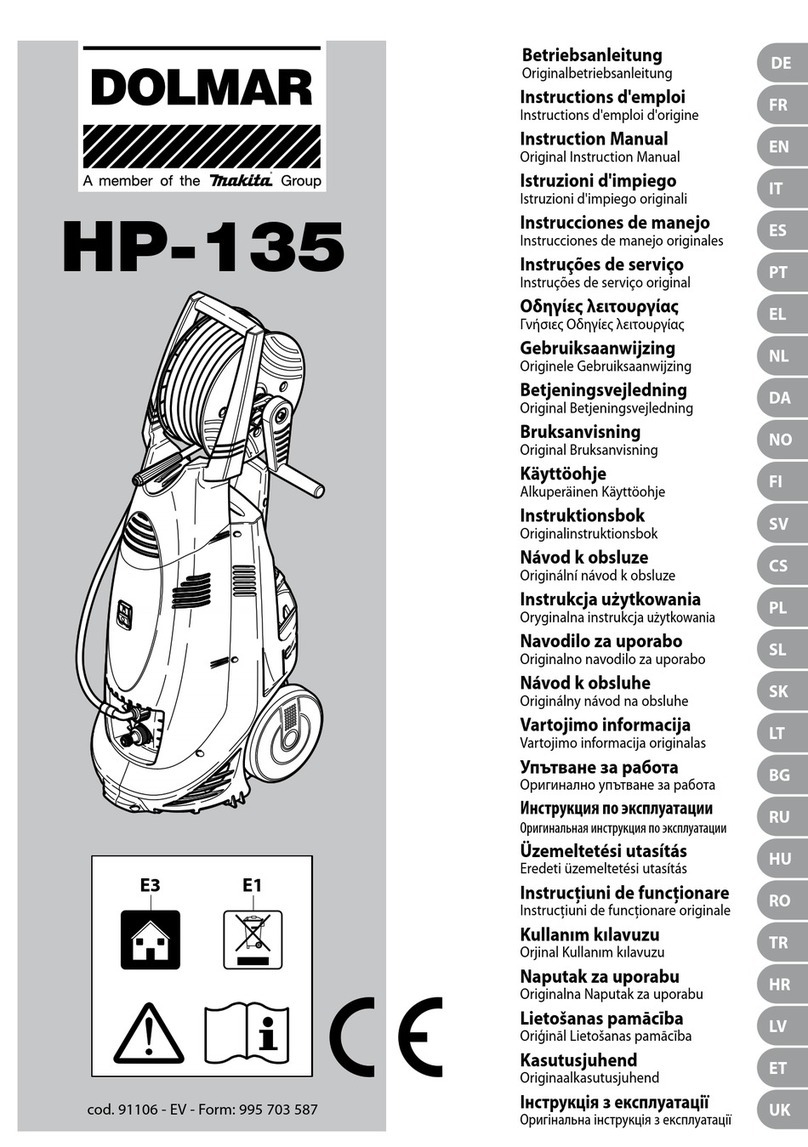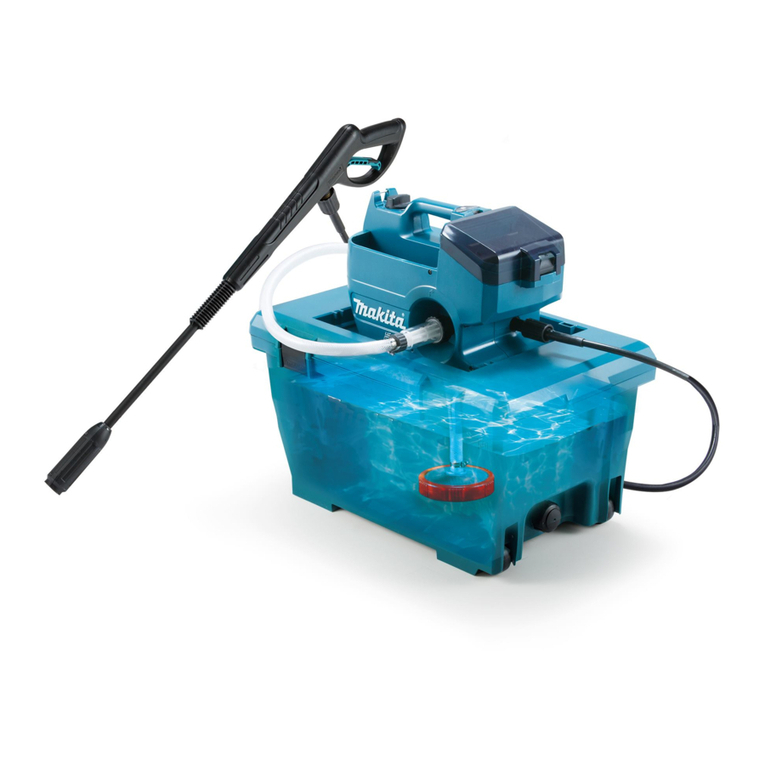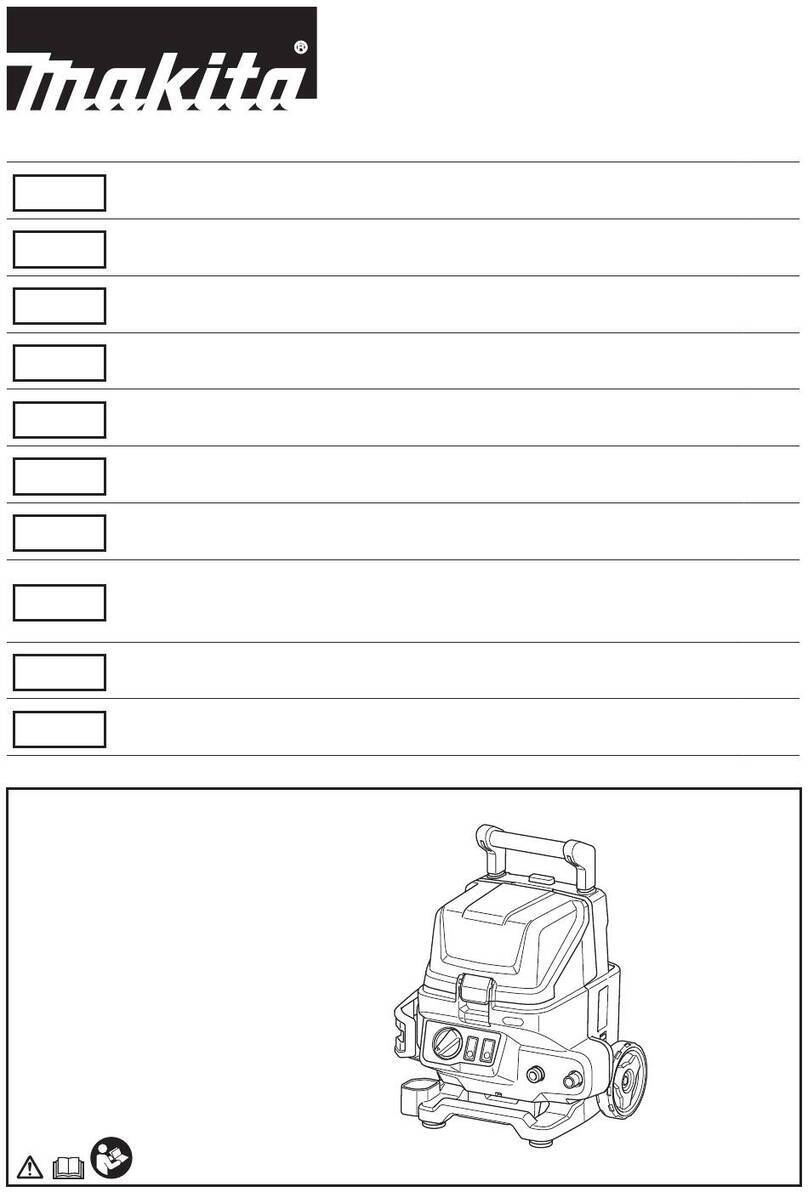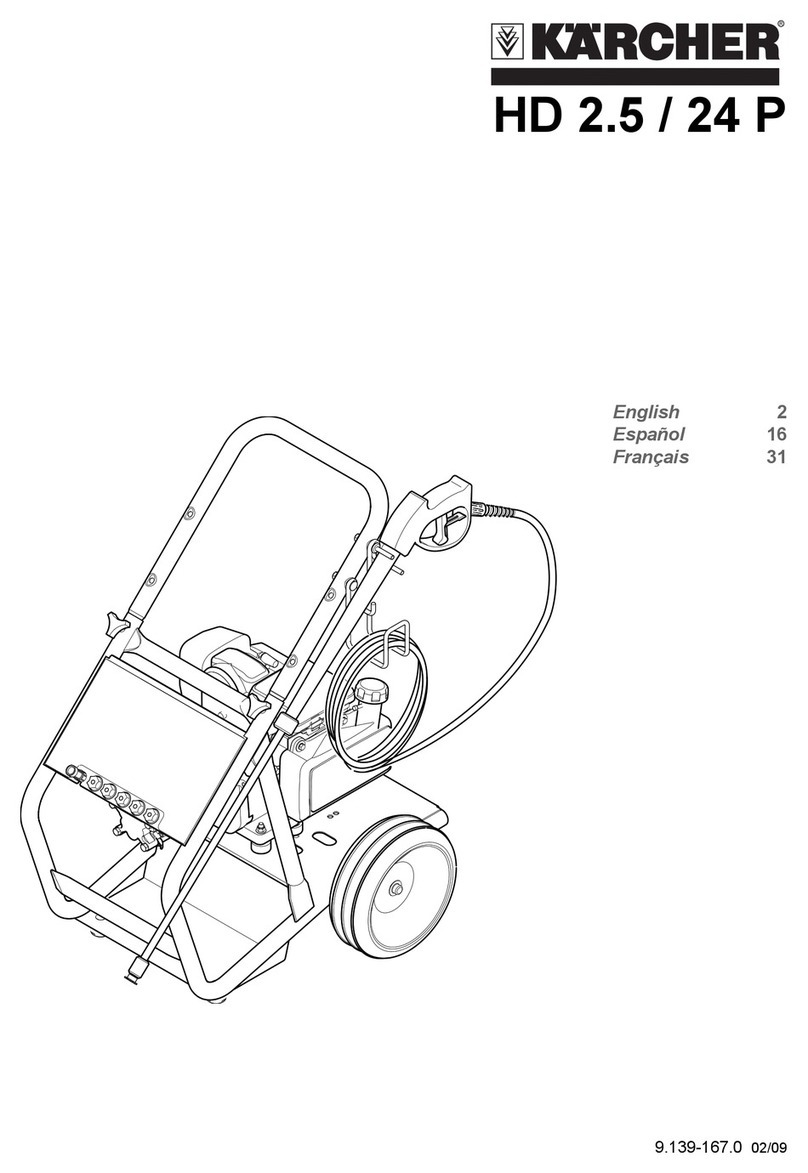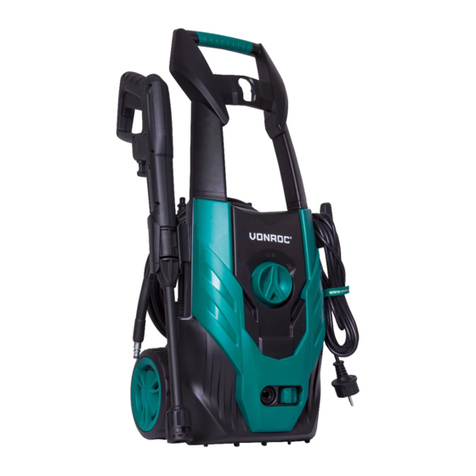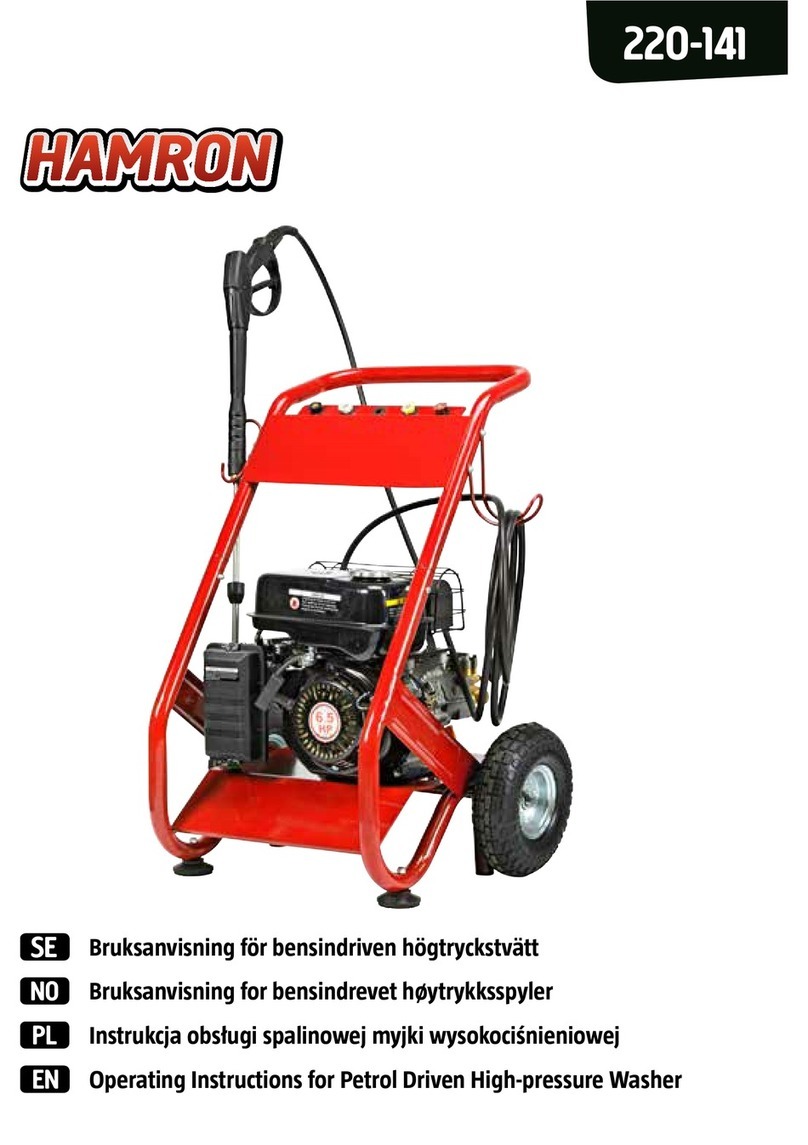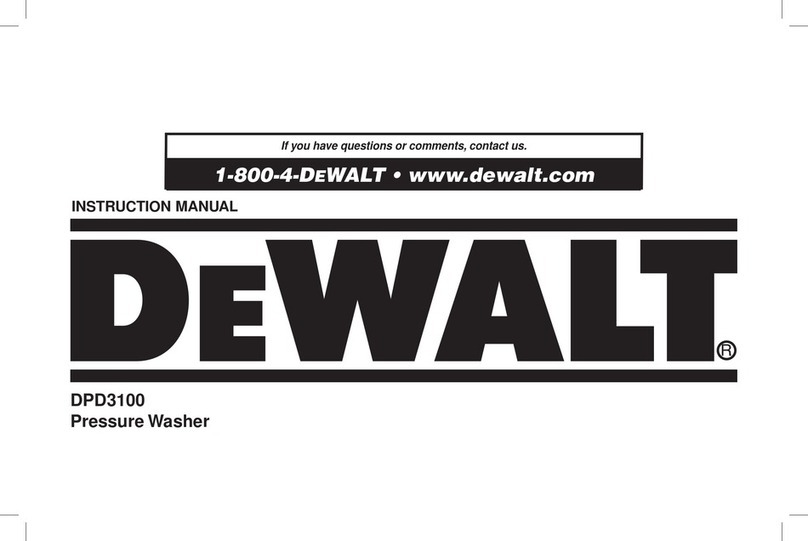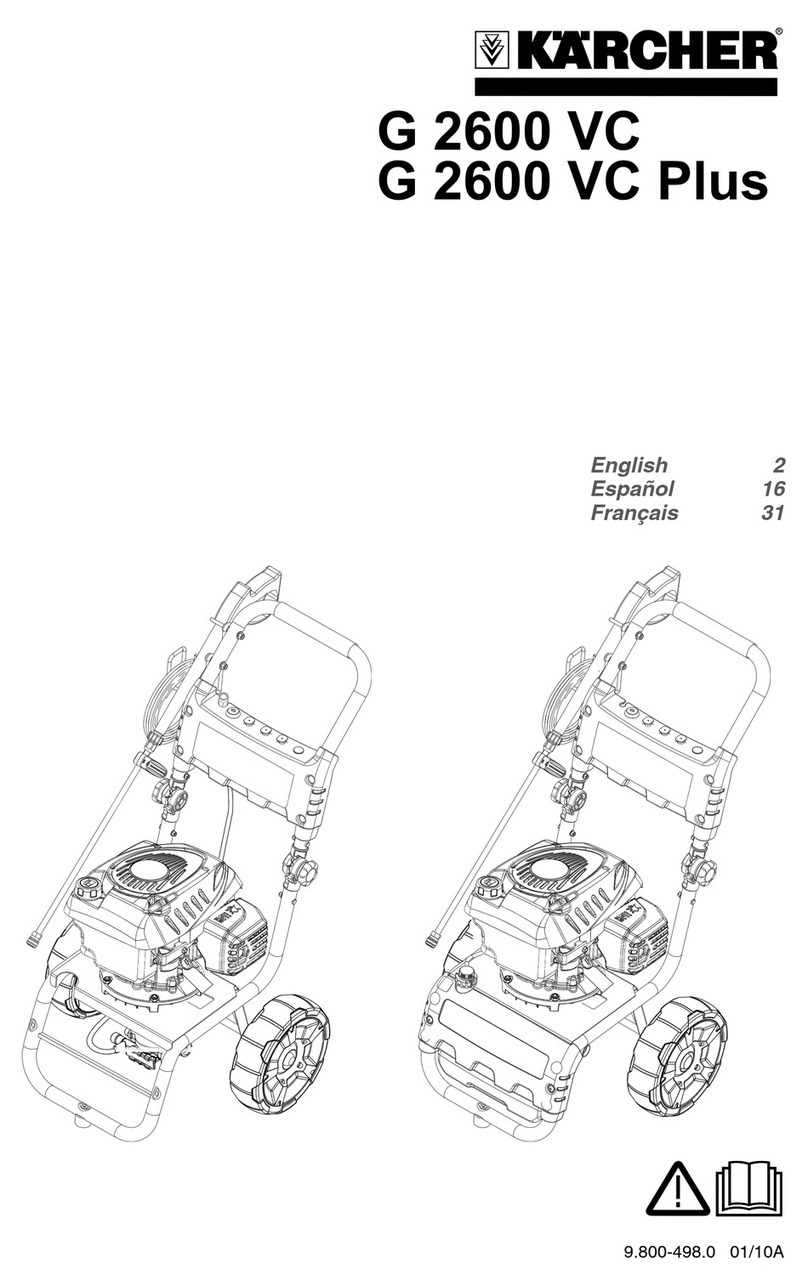
7ENGLISH
24. Depending on the application, shielded noz-
zles can be used for high pressure cleaning,
which will reduce the emission of hydrous
aerosols dramatically. However, not all appli-
cations allow the use of such a device. If
shielded nozzles are not applicable for the pro-
tection against aerosols, a respiratory mask
of class FFP 2 or equivalent may be needed,
depending on the cleaning environment.
25. The employer shall perform a risk assessment
in order to specify the necessary protective
measures regarding aerosols, depending on
the surface to be cleaned and its environment.
Respiratory masks of class FFP 2, an equiv-
alent or higher are suitable for the protection
against hydrous aerosols.
26. Prevent unintentional starting. Ensure the
switch is in the o-position before connecting
to battery pack, picking up or carrying the
appliance. Carrying the appliance with your nger
on the switch or energizing appliance that have
the switch on invites accidents.
27. Disconnect the battery pack from the appli-
ance before making any adjustments, chang-
ing accessories, or storing appliance. Such
preventive safety measures reduce the risk of
starting the appliance accidentally.
28. Do not modify or attempt to repair the appli-
ance or the battery pack except as indicated in
the instructions for use and care.
29.
Do not apply the water jet to the same area con-
tinuously. The object may break and cause an injury.
30. Do not wash the machine with the water jet of
this machine. The machine may break or parts of
the machine may come o and cause an injury.
31. To avoid risk of electric shock, do not direct
the water jet against the machine while the
machine is turned on.
Battery tool use and care
1. Recharge only with the charger specied by
the manufacturer. A charger that is suitable for
one type of battery pack may create a risk of re
when used with another battery pack.
2. Use power tools only with specically desig-
nated battery packs. Use of any other battery
packs may create a risk of injury and re.
3. When battery pack is not in use, keep it away
from other metal objects, like paper clips,
coins, keys, nails, screws or other small metal
objects, that can make a connection from one
terminal to another. Shorting the battery termi-
nals together may cause burns or a re.
4. Under abusive conditions, liquid may be
ejected from the battery; avoid contact. If con-
tact accidentally occurs, ush with water. If
liquid contacts eyes, additionally seek medical
help. Liquid ejected from the battery may cause
irritation or burns.
5. Do not use a battery pack or tool that is dam-
aged or modied. Damaged or modied batteries
may exhibit unpredictable behaviour resulting in
re, explosion or risk of injury.
6. Do not expose a battery pack or tool to re or
excessive temperature. Exposure to re or tem-
perature above 130 °C may cause explosion.
7. Follow all charging instructions and do not
charge the battery pack or tool outside the
temperature range specied in the instruc-
tions. Charging improperly or at temperatures
outside the specied range may damage the
battery and increase the risk of re.
Service
1. Follow the maintenance instructions specied
in the manual.
2. To ensure machine safety, use only original
spare parts from the manufacturer or approved
by the manufacturer.
3.
Have your high pressure washer serviced by
a qualied repair person using only identical
replacement parts. This will ensure that the safety
of the high pressure washer is maintained.
4. In case of breakdown or malfunction of the
high pressure washer, immediately switch it o
and remove the battery cartridge(s). Contact
your local dealer or service center.
Additional safety warnings
1. Comply with the requirements of the local
water supply company.
2.
Do not use the machine when there is a risk of lightning.
3.
When you use the machine on muddy ground, wet
slope, or slippery place, pay attention to your footing.
4. Do not replace the battery in the rain.
5. Do not submerge the machine into a puddle.
6. Do not leave the machine unattended outdoors
in the rain.
7. When storing the machine, avoid direct sun-
light and rain, and store it in a place where it
does not get hot or humid.
8. Do not sit on the machine or use the machine
as a step stool. Doing so may cause accident or
malfunction of machine.
SAVE THESE INSTRUCTIONS.
WARNING: DO NOT let comfort or familiarity
with product (gained from repeated use) replace
strict adherence to safety rules for the subject
product.
MISUSE or failure to follow the safety rules stated
in this instruction manual may cause serious
personal injury.
Important safety instructions for
battery cartridge
1. Before using battery cartridge, read all instruc-
tions and cautionary markings on (1) battery
charger, (2) battery, and (3) product using
battery.
2. Do not disassemble or tamper with the battery
cartridge. It may result in a re, excessive heat,
or explosion.
3. If operating time has become excessively
shorter, stop operating immediately. It may
result in a risk of overheating, possible burns
and even an explosion.
4.
If electrolyte gets into your eyes, rinse them out
with clear water and seek medical attention right
away. It may result in loss of your eyesight.







